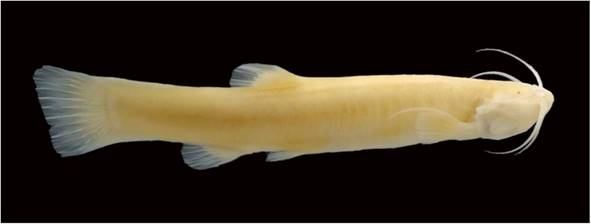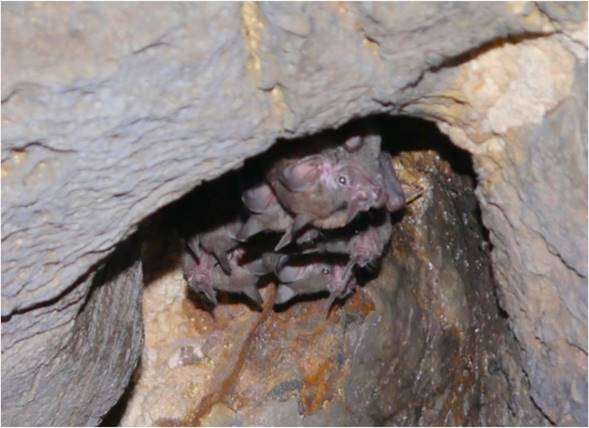Introduction
The karstic system of La Paz has a large quantity of subterranean environments among caves, caverns, grottos, holes, and sinkholes of which the most notable - by its vertical depth- is the Hoyo del Aire, a Sima-type geological formation with a vertical drop greater than 150 m and more than 100 m diameter. These cavities were produced by meteoric agents in combination with digenetic processes and those geological structures developed through different orogenic processes throughout its geological history (Mendoza-Parada et al., 2009). Currently, at least 23 subterranean ecosystems had been recorded in La Paz region, many of them explored in the last century by several foreign researchers, who developed important expeditions to this region and published valuable manuscripts, with some being cited such as: with some being cited such as: The Polish Expedition “Andes 75”, The French Expedition 1977, The expedition of the Hungarian Academy of Sciences 1985, The French Expedition1980, and The Yuguslavian Expedition 1984 (Muñoz-Saba et al., 1999). To date, many Colombian and foreign researchers have carried out studies on biological diversity in underground ecosystems in the karstic area of La Paz, which have included the discovery of new species of crabs (Rodríguez, 1985), fish (Castellanos-Morales, 2018, 2010), snails (Hershler and Velkovrh, 1993) and crickets (Cadena-Castañeda et al., (2022). The latter species it was named as Aclodes paz, in honor of the municipality of La Paz (type locality).
Subterranean environments are found in almost all regions of the planet and they create spaces available for colonization for some of the living organisms that inhabit the adjacent epigeal environment (Trajano & Bichuette, 2006). A branch of the biological sciences that studies the different life forms inside caves is called biospeleology, their study formally began with the publication of the manuscript by the Romanian Emil Racovtza in 1907 entitled “Essay sur les Problémes biospeologiques”. The first researcher who significantly contributed to the development of Colombian biospeleology was Cornelis Johannes Marinkelle (Austria, 1925 - Bogotá, 2012), a biologist and doctor who visited many caves in Colombia to study the life cycles, hosts, and vectors of different medically important tropical parasites (Angarita-Sierra, 2018, et al., 2019).
According to Sánchez & Lobo (2018), underground organisms are those which have an ecological relationship defined by their hypogean medium which constitutes part of, or all the habitats these species inhabit. These organisms are at least capable of spatially orienting themselves in the dark and are usually classified according to their ecological relationships. following to the Schiner-Racovitza classification (modified by Trajano, 2012) all organisms that regularly inhabit subterranean environments are often categorized (irrespective of its taxonomic identity), into three categories. A) trogloxenes: individuals regularly found in subterranean habitats, that need to move periodically to the surface to complete their life cycle). B) troglophiles: populations found in the epigean and in the subterranean habitat and their individuals usually move between the two habitats, keeping a connectivity between them and promoting the genetic flow in each population. C) troglobites: populations that exclusively inhabit subterranean environments, usually they are unique or endemic to hypogean systems or karstic areas, because individuals are highly specialized to hypogean life. Troglobites do not survive a long time in the epigeal environment and cannot disperse across the surface.
Troglobites, troglophiles and trogloxenes species interact with each other in a relationship of interdependence. These species are equally important from a functional and ecological point of view and contribute to phylogenetic, morphologic, functional, ecologic and genetic diversity; for this reason, they should all be the focus of attention and concern for the purpose of conservation. (Sánchez & Lobo, 2018, Flórez, 2004).
In this contribution, we will focus on the vertebrate cave fauna troglobite and troglophile of the karst system La Paz, in order to contribute to the biospeleological knowledge of the Andean Region of Colombia and presenting, for the first time, a record of local extinction of a macaw population in a subterranean environment.
Materials and methods
A comprehensive and critical annotated checklist of vertebrate cave fauna troglobite and troglophile of the subterranean karst system La Paz, based on bioinventories of 17 caves and holes (Figure 1), compiled in 2017 - 2019, and a review of existing published information on the study area are presented. Survey sites included five villages in La Paz municipality: vereda El Tigre (7 caves, 2 holes), vereda San Pablo (1 cave, 1 hole), vereda Casas Blancas (3 caves), vereda Amarillo (2 caves) and vereda Carrero (1 cave). The caves fauna inventories involved visual-encounter surveys of cave life in terrestrial and aquatic habitats, from the entrance areas, to cave streams, including cave walls and ceilings. Photographs of the species in each location were taken. Taxonomic identification required the collection of some specimens, specifically from the fish group, and they were preserved in 10% formalin and then in 70% alcohol. Biological specimens were deposited in national collections such as the Humboldt Institute and La Salle Museum - Bogotá. The list of taxa presented here only contains information on each of the groups identified at the taxonomic species level. The annotated list of vertebrate fauna includes the scientific name, authority, common names, localities, origin, feeding habits, distribution and conservation status for each species. Some of the common names were dervied according to local information provided by the cave guides and the farmers. The conservation status of each species, based on the International Union for Conservation of Nature (IUCN) Red List of Threatened Species (http://www.iucnredlist.org/ [accessed February 1, 2023]). The classifications of cave-associated organisms (cavernicoles) follow Trajano & Bichuette (2006). We emphasized the subterranean ecosystem of Hoyo del Aire, where a local extinction event for a species of bird was documented.
Study area
The karstic system of La Paz is located on the eastern side of the Cordillera Oriental, in the municipality of La Paz, on the southwest of the department of Santander, Colombia (Figure 1). According to Mendoza-Parada et al. (2009) and Cadena-Castañeda (2022) at the geological level, this municipality presents different sedimentary lithostratigraphic units of the Cretaceous age, grouped in the formations: Rosablanca, Paja, Tablazo, Simití, and Luna; with records of the Quaternary unit, composed of accumulations of alluvial-type material of little extension. As a consequence of its geological structure, La Paz currently exhibits a geomorphological variability made up of hills, mountains, valleys, and steep areas, with different epigean and hypogean karstic formations such as: dolines, exurgences, caves, sinkholes, holes, and grouts, etc. At least 216 subterranean environments are currently registered in the department of Santander and the great majority present some record of fauna (Dulcey-Ulloa & Lasso 2019, Castellanos-Morales & Moreno, 2018). The total of hipogean environments reported in this study are presented in table 1.
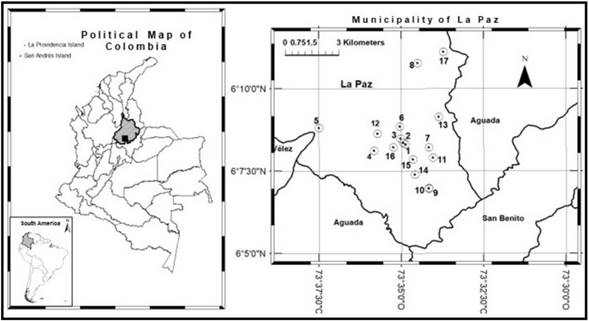
Figure 1 Subterranean environment of La Paz karstic system, municipality of La Paz (Santander, Colombia).
Table 1 Localities with information on troglophic and troblobit vertebrate fauna in the karstic area of La Paz. Type of cave as wet or dry according to Castellanos & Moreno (2018).
| No. | Locality | Coordinates | Type | Elev. | |
|---|---|---|---|---|---|
| N | W | ||||
| 1 | Brujas - 1 grotto | 06°08’18,1’’ | 73°34’52,9’’ | Dry | 1752 |
| 2 | Brujas - 2 cave | 06°08’21’’ | 73°34’57’’ | Dry | 1752 |
| 3 | Brujas - 3 cave | 06°08’29’’ | 73°35’01,6’’ | Dry | 1752 |
| 4 | De Gedania cave | 06°08’7’’ | 73°35’50’’ | Wet | 1870 |
| 5 | Del Indio cave | 06°08’48’’ | 73°37’30’’ | Wet | 2132 |
| 6 | El Molino cave | 06°08’50,7’’ | 73°35’02,8’’ | Dry | 1767 |
| 7 | El Toro cave | 06°08’12,9’’ | 73°34’10,2’’ | Wet | 1611 |
| 8 | La Cuchara - 1 cave | 06°10’46,5’’ | 73°34’30,4’’ | Wet | 1836 |
| 9 | La Lajita - 1 cave | 06°06’58’’ | 73°34’10’’ | Wet | 1612 |
| 10 | La Lajita - 2 cave | 06°06’58.2’’ | 73°34’10,4’’ | Dry | 1605 |
| 11 | Los Chilladores cave | 06°07’54.5’’ | 73°34’02.6’’ | Wet | 1530 |
| 12 | Melchor cave | 06°08’38’’ | 73°35’43,7’’ | Dry | 1867 |
| 13 | Murcia cave | 06°09’08,7’’ | 73°33’51,8’’ | Wet | 2026 |
| 14 | Remolino - 1 cave | 06°07’23.3’’ | 73°34’35.4’’ | Wet | 2012 |
| 15 | Hoyo del Aire | 06°07’51’’ | 73°34’39’’ | Wet | 1835 |
| 16 | Hoyo Colombia | 06°08’13’’ | 73°35’15’’ | Wet | 1858 |
| 17 | Hoyo del Consumidero | 06°11’07.1’’ | 73°33’44.0’’ | Wet | 1870 |
Results
Annotated list of vertebrate fauna, troglobite and troglophile, of the karst system in La Paz. All taxa shown here are organized by taxonomic hierarchies from phylum to species.
FISH
Phylum Chordata
Subphylum Vertebrata
Class Actinopterygii
Order Siluriformes
Family Trichomycteridae
Genus Trichomycterus
Trichomycterus donascimientoiCastellanos-Morales, 2018. (Figure 2)
Localities: De Gedania cave, El Toro cave, La Cuchara -1 cave, Murcia cave, Remolino -1 cave, Hoyo del Aire, Hoyo Colombia. Category: Troglobite. Origin: Endemic. Feeding habits: Carnivorous. Common name: Lauchas. Conservation status IUCN: Vulnerable (VU).
Distribution: Trichomycterus donascimientoi is an endemic species to Colombia, known exclusively to the karst system of La Paz, Department of Santander. 1500 - 2000 m elev. (Castellanos 2018). To date, T. donascimientoi is the species with the largest distribution in the different hypogean environments of the municipality of La Paz.
Remark: This type species was collected in the karstic area of La Paz and the Geldania cave is the type locality of T. donascimientos (Castellanos 2018).
Trichomycterus sketiCastellanos-Morales, 2010
Localities: Del Indio cave. Category. Troglobite. Origin: Endemic. Feeding habits: Carnivorous. Common name: Lauchas. Conservation status IUCN: Vulnerable (VU). Fig 3.
Distribution: Endemic of Colombia, Santander department, 1500 - 2000 m elev., karst system of La Paz. To date, there is only one record of one cave where this species has been collected in the municipality of La Paz Castellanos & Galvis, 2012; Castellanos-Morales et al., 2015).
Remark: The type species of T. sketi was collected in the karstic area of La Paz and the type locality recorded in the original description by Castellanos (2010) is Del Indio cave.
BATS
Class Mammalia
Order Chiroptera
Family Phyllostomidae
Genus Artibeus
Artibeus planirostris (Spix, 1823)
Localities: Murcia cave. Category. Troglophile. Origin: Native. Feeding habits: frugivorous. Common name: faced Fruit-eating Bat. Conservation status IUCN: Least Concern (LC).
Distribution: A. planirostris is a widely distributed species in America, from northern Argentina to Bolivia, Brazil, Colombia, Ecuador, French Guiana, Guyana, Paraguay, Peru, Venezuela and Suriname. In Colombia it has been reported in the Andean, Orinoquia and Amazonia Regions (Muñoz-Saba et al. 2013).
Genus Carollia
Carollia brevicauda (Schinz, 1821)
Localities: caves La Lajita -1, and 2; Melchor cave. Category: Troglophile. Origen: Native. Feeding habits: frugivorous. Common name: Silky short-tailed bat. Conservation status IUCN: Least Concern (LC).
Distribution: C. brevicauda occurs in Panamá, Colombia, Venezuela, Guyana, Suriname, Ecuador, Peru, Bolivia, and Brazil. In Colombia is a very common species, it has been reported in all regions. (Muñoz-Saba et al., 2013).
Carollia perspicillata (Linnaeus, 1758). (Figure 4)
Localities: caves Brujas -2, -3, De Gedania cave, Melchor cave, Gruta Brujas -1 y Hoyo Colombia. Origen: Native. Category: Troglophile. Feeding habits: Frugivorous. Common name: Seba’s Short-tailed Bat. Conservation status IUCN: Least Concern (LC).
Distribution: C. perspicillata occurs from Mexico through Peru, Bolivia, Paraguay, Brazil, and Guyana. In Colombia this species is very common in all the regions of the country (Muñoz-Saba et al., 2013).
Genus Desmodus
Desmodus rotundus (É. Geoffroy Saint Hilaire, 1810)
Localities: El Molino cave; Del Indio cave. Category: Troglophile. Origin: Native. Feeding habits: hematophagous. Common name: Common vampire bat. Conservation status IUCN: Least Concern (LC).
Distribution: D. rotundus inhabits Uruguay, Argentina, Chile, Paraguay, Bolivia, Colombia and Mexico. In Colombia this species is one of the most widespread in all regions of the country (Muñoz-Saba et al., 2013).
Genus Platyrrhinus
Platyrrhinus dorsalis (Thomas, 1900)
Localities: El Molino cave. Category: Troglophile. Origin: Native. Feeding habits: frugivorous. Common name: Thomas’s Broad-nosed Bat. Conservation status IUCN: Least Concern (LC).
Distribution: P. dorsalis inhabits Venezuela Colombia, Ecuador and Peru. In Colombia it has been recorded in the Caribbean and Andean region (Muñoz-Saba et al., 2013).
Genus Sturnira
Sturnira erythromos (Tschudi, 1844)
Localities: El Molino cave. Category: Troglophile. Origin: Native. Feeding habits: Frugivorous. Common name: Hairy Yellow-shouldered Bat. Conservation status IUCN: Least Concern (LC).
Distribution: S. erythromos inhabits Venezuela, Colombia, Ecuador, Peru, Bolivia, and northern Argentina. In Colombia it has been recorded in the Caribbean and Andean region. (Muñoz-Saba et al., 2013).
BIRDS
Class Aves
Order Caprimulgiformes
Family Steatornithidae
Genus Steatornis
Steatornis caripensis Humboldt, 1817. (Figure 5)
Localities: Hoyo del Aire, Hoyo del Consumidero, los Chilladores cave. Category: Troglophile. Origin: Native. Feeding habits: Frugivorous. Common name: Guácharos, chilladores, oilbird. Conservation status IUCN: Least Concern (LC).
Distribution: S. caripensis inhabits Brazil, Colombia, Costa Rica, Ecuador, Guyana. Panama, Peru, Trinidad and Tobago, and Venezuela. In Colombia it has been reported in the Andean and Amazon regions, however, solitary individuals have been found, both in the Magdalena-Caribbean region and in the Llanos (Cordoba-Cordoba & Sierra, 2019).
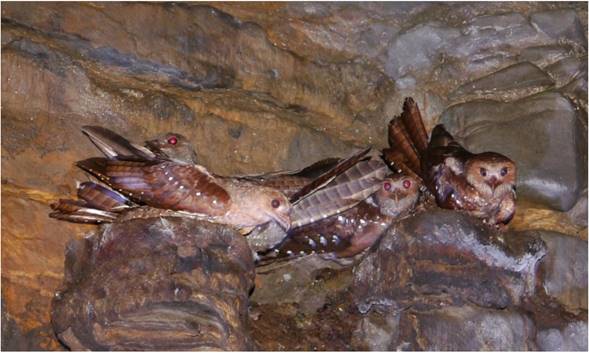
Photography by Cesar Castellanos.
Figure 5 Teatornis caripensis nesting inside the cave Del Aire, a cavity located in the bottom of the Hoyo del Aire.
Of the 23 subterranean ecosystems registered in the La Paz area by different authors (Castellanos & Moreno 2018; Dulcey-Ulloa & Lasso 2019; Maleckar et al. 1990; Mendoza-Parada et al. 2009, Muñoz-Saba et al. 2013) vertebrate fauna information was obtained for 17 hypogean environments (Table 2: 12 caves, 3 holes and 1 grotto, corresponding to 75%, 19% and 6% respectively. (Figure 6). Furthermore, according to Moreno et al. (2018), 11 cavities are humid and 6 are dry.
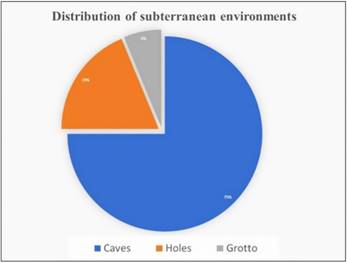
Figure 6 Distribution of subterranean cavities with bioinventories of vertebrate fauna in La Paz karst system.
First record of a local extinction (extirpation) of a macaw population in a subterranean habitat, karstic system of La Paz
Use of the word “extinction” can strongly influence our perception about the current state of a biological population, establishing a disconnection between scientific discussion and public views. According to Smith-Patten et al., (2015), is not a mere semantic issue, rather one of communication, because one study might report the local extinction of a species and then another study can document its return. In this case, the term “extinction” within the phrase “local extinction” may cause a problem for public understanding of conservation. For this reason, the word extirpation used as a synonym of local extinction, could help improve understanding by the reader.
Local extinction, also known as extirpation for several authors (Yan et al., 2022; Tatsumi et al., 2021; Bond et al., 2019; Smith-Patten et al., 2015; Woodruff, 2001) is used to denote the local loss of a population in a particular area, a habitat patch, or in a subarea nested within a region. However, it is possible that other populations of the same species may come to recolonize the same place in the future. In this paper we use the term extirpation as a synonym for local extinction.
An event that went unnoticed by other researchers and that is related to the loss of a native bird population that nested in the subterranean Hoyo del Aire environments, in the karst systems of La Paz, Colombia, was discovered during our bibliographic research. This historical report supports a local extinction event that can be considered the first national record of the extirpation of a species in a subterranean habitat. The manuscript entitled “Peregrinación de Alpha” published by Manuel Ancizar in 1853, is a lengthy volume with illustrative information about geology, culture and environment (flora and fauna), as well as, analytical remarks. Around mid-19th century Mr. Manuel Ancizar participated on the first Chorographic Commission, gathering information from different provinces of New Granada, (currently Colombia) (Campuzano-Hoyos, 2018).
Mr. Ancizar made the first known record of the Hoyo del Aire in the year 1850, he had the purpose of describing, in his words, “one of the rarest geological phenomena”. In their work, Ancizar identified a group of macaws that inhabited the Hoyo del Aire and reported his finding as follows (original Spanish): “Las paredes del hoyo, verticales y formadas de estratas de calcáreo como el cerro en que está, se hallan cubiertas de vegetación i habitadas sus grietas por gran número de guacamayas, cuyos brillantes colores lucen en lo profundo al cortar en su vuelo espiral los oblicuos rayos del sol” (Peregrinación de Aplha, pág. 104, Ancizar, 1853). Another record of macaws inside the Hoyo del Aire was made in 1851 by Presbyter Romualdo Cuervo, who described this place as “a gentle macaw mansion.” Mr. Cuervo was the first explorer who descended to the bottom of the hole, in addition to the macaws, Mr. Romualdo reported the presence of abundant nests of guacharos in the inner cave at the bottom of the Hoyo del Aire. (El Hoyo del Aire, pag. 288, Cuervo 1867). These historical reports are very important because since Cuervo and Ancizar ́s reports, to date no records of macaws in the karstic area of La Paz have been published again.
Although it is not easy to identity what species of macaw Mr. Ancizar and Cuervo were referring to in their writings, we currently have access to information on the presence and distribution of the species of Macaw (genus Ara) in the Santander department, reported by different authors: Ara arauna [Blue-and-yellow Macaw], Ara militaris [Military Macaw] and Ara severus [Chestnut-fronted Macaw] (Arbeláez-Cortés et al. 2020; Laverde-R. et al. 2005; Rodríguez-Mahecha & Hernández-Camacho 2002; Hilty & Brown 1986). Consequently, it is highly reasonable to argue that one of these three species was the one Ancizar and Cuervo reported. It is necessary to assess ecological aspects such as nesting and altitudinal distribution range to determine which species the explorers observed.
Of the previously mentioned species, both Ara arauna and Ara severus have their nesting behaviors associated with living or dead trees, these macaws prefer to use the highest parts of the trees. In addition, the altitudinal distribution range of these two species in Colombia, varies from sea level to 800 m elevation.
The only species of macaw whose altitudinal distribution varies from sea level to 2000 m is Ara militaris. Furthermore, this species has verified reports of nesting habits in rocky parts such as cliffs or edges of canyons and river valleys.
According to our research, we can assure with a reasonable degree certainty, that Ara militaris, was the species of macaw reported by Ancizar and Cuervo, extirpated from the municipality of La Paz, subterranean environment Hoyo del Aire. Ara militaris, known as the Military Macaw is a trans-Andean species registered in the department of Santander (Laverde-R. 2005, Rodríguez-Mahecha & Hernández-Camacho 2002, Hilty & Brown 1986) and whose populations have strongly decreased in recent decades. Consequently, historical data allows us to estimate that Ara militaris were likely extirpated from Hoyo del Aire after 1867.
The human impact on the environment and its relationship with local extinction processes have been investigated by Cowlishaw et al. (2009), who found that individual species exhibit different patterns of decline in response to different threat types (e.g. hunting and habitat disturbance), or different anthropogenic processes that comprise these threats. Some examples of anthropogenic processes that greatly disturb habitats include selective logging and shifting cultivation (Isaac & Cowlishaw 2004). As in most of the terrestrial ecosystems of Colombia, the subterranean habitats and their natural resources have been modified by human activities in recent decades, including illegal mining, logging of timber, illegal hunting of fauna, strong agricultural and livestock activity; even the armed conflict has undoubtedly negatively affected biological diversity (Castellanos & Vargas 2022). The inhabitants of the La Paz municipality have recognized that deforestation, the contamination of its waters, the hunting of wild fauna, the armed conflict and the excessive use of agrochemicals, have had a negative impact on the presence or conservation of the biological population of this region, including fauna those that inhabit the karstic areas and their subterranean ecosystems (Castellanos et al., 2015).
Taxonomy
Class Aves
Order Psittaciformes
Family Psittacidae
Genus Ara
Ara militaris (Linnaeus, 1766)
Common name: Military Macaw. Conservation status IUCN: Vulnerable (VU).
Distribution: Ara militaris has a wide but localized distribution from Mexico to Argentina. In Colombia it is distributed in the Sierra Nevada de Santa Marta, and in the Eastern Cordillera it goes from the Serranía del Perijá to Bucaramanga; and on the eastern slope of the mountain range from the Serranía de la Macarena to Putumayo. Similarly, on the eastern and western slopes of the central mountain range (Hilty & Brown 1986).
Remark: The first record of a locally extinct species in the karstic system of La Paz - Hoyo del Aire, Colombia.
Conclusion
The vertebrate fauna that inhabits the different subterranean environments such as caves, holes and grottoes of the La Paz karstic system, in particular the species of birds and bats with frugivorous eating habits, are recognized for their vital ecological function. These species maintain the natural vegetation cover by spreading seeds and contributing to the restoration of the local flora (Casallas-Pabón et al., 2013).
The authors recognize the biological and speleological value of the different underground environments in the municipality of La Paz, and we believe that this area should be considered as a place for conservation and controlled tourist use, in such a way that the caves and their biological diversity can be preserved for the future.
Additionally, Organisms categorized as troglobite or troglophile fauna are characterized by their total or partial dependence on subterranean habitats. therefore, are highly vulnerable to threats resulting from environmental change and the alteration and degradation of the environment undoubtedly allows these organisms to be used as a bioindicator of the health of underground ecosystems and their preservation by the competent environmental authorities at the local and national levels must be a priority aspect in the nation’s conservation policy (Bichuette, 2018, Campos & Lasso, 2017; Linares et al., 2018).
Although we recognize the existence of a population of birds (Steatornis caripensis) inside the Hoyo del Aire, the nesting habit of this species is restricted to the internal cave that forms deep in the hole. It is thus established that the bird reported by Mr. Ancizar was a different species to Steatornis caripensis, with feather colors very different and that had completely different nesting, being able to occupy the walls of rocks and cliffs, a rock formation, like the one that occurs on the walls of the air hole. These characteristics are attributed to macaws, and particularly to Ara militaris.
Currently, there is no population of macaws either inside the Hoyo del Aire, or in any other environment of the karstic zone of La Paz municipality. It is possible that a combination of several factors such as the felling trees, hunting wildlife, agricultural production, environmental contamination, and even the armed conflict in this region of the country, have caused the extirpation of the macaw population.














